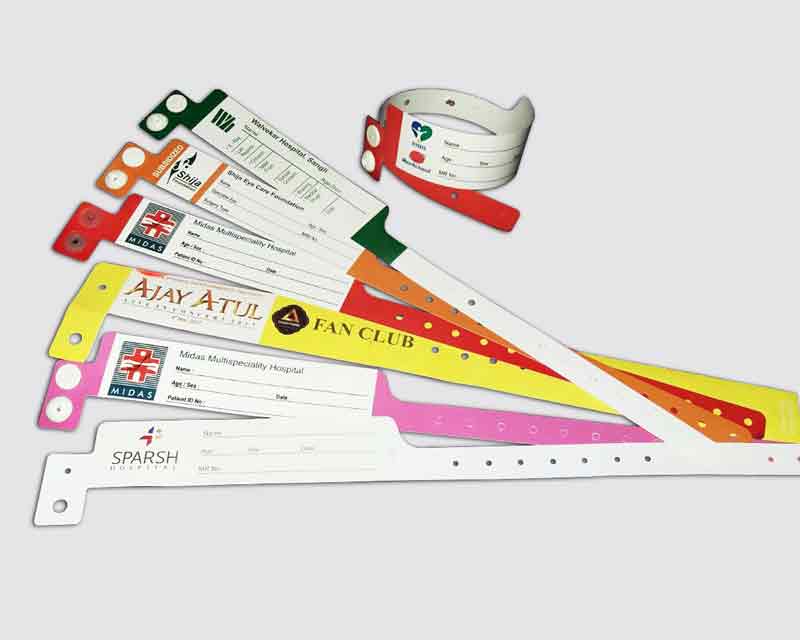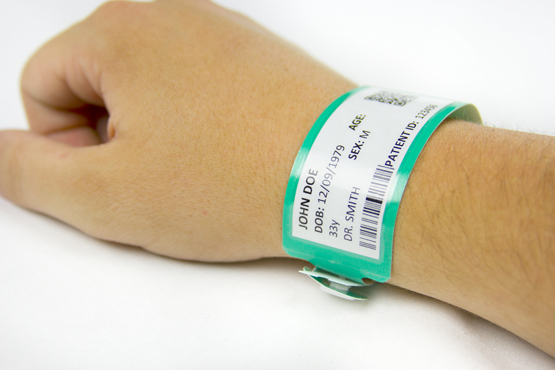Checking Out the Various Sorts Of Patient Identification Band Made Use Of in Clinical Facilities
In the complex world of medical care, the crucial duty of Patient Identification bands usually goes undetected. These bands, varying from simple paper wristbands to innovative RFID bands, form the foundation of Patient safety methods, making sure precision in Patient Identification. The huge diversity of these bands, each with its one-of-a-kind benefits and constraints, is commonly neglected. As we browse through this subject, one may obtain insight right into the subtle intricacies and vital importance of such bands in clinical centers.
Recognizing the Importance of Patient Identification Bands
While they may look like plain accessories, Patient Identification bands play an important duty in clinical facilities. These bands function as a vital tool for confirming Patient identification, protecting against medical errors connected to misidentification. The bands commonly show important info such as the Patient's name, age, blood group, and any known allergies. They enable medical care specialists to quickly access this vital info, consequently facilitating accurate and prompt medical treatment. Patient Identification bands likewise aid in enhancing management jobs, making certain accurate record-keeping and billing. Despite their simplicity, these bands symbolize the principle of Patient security, a foundation of high quality health and wellness treatment. Without them, the danger of clinical mistakes, and subsequently, Patient injury, could significantly enhance.
Typical Paper Wristbands: Their Use and Limitations
Standard paper wristbands have been a staple in Patient Identification across numerous clinical facilities. While their use prevails, they harbor certain restrictions that might affect their effectiveness in Patient management. This area will focus on the extent of their application and the intrinsic disadvantages connected with their usage.
Paper Wristbands: Usage Extent
In the realm of Patient Identification, paper wristbands have actually long held a vital function. These bands are typically made use of in outpatient settings, where the Patient's stay is short-lived. The wristbands consist of essential details such as the Patient's name, day of birth, and a distinct Identification number. This straightforward, yet effective system, permits medical specialists to promptly and properly determine clients, ensuring the appropriate treatment is administered. Paper wristbands are additionally used in emergency situation situations, where fast Identification is critical. Their usage encompasses events like blood contribution drives and mass vaccination programs, additionally stressing their flexibility. Regardless of developments in modern technology, the humble paper wristband stays a reliable and economical remedy for Patient Identification in various medical care scenarios.
Limitations of Paper Wristbands
In spite of their widespread use, paper wristbands are not without their disadvantages. In enhancement, paper wristbands commonly lack the technical abilities of more contemporary alternatives, such as barcoding or RFID chips, restricting their functionality to merely showing created information. Paper wristbands can cause pain or skin inflammation to some individuals, especially when used for prolonged durations.
Barcoded Wristbands: Improvements in Patient Identification
While Patient Identification has long been a crucial element of healthcare, the development of barcoded wristbands signifies a considerable jump forward. These bands take advantage of the simpleness of barcoding technology, enabling Patient information to be swiftly checked and accessed. They enhance the rate and precision of Patient Identification, minimizing the threat of medical errors connected to misidentification. Barcoded wristbands are affordable, very easy to create, and remove handwriting mistakes common with hand-operated systems. They are not without restrictions. While they supply improvements over conventional bands, the barcode can end up being used or smudged, providing it unreadable. find out Despite this, barcoded wristbands stay a necessary device in modern healthcare settings, representing the junction of modern technology and Patient treatment.
Radio Frequency Identification (RFID) Bands: a Step In The Direction Of Futuristic Healthcare
The advancement of Patient Identification bands has produced the development of Superhigh frequency Identification (RFID) Bands (patient identification band). These cutting-edge gadgets present essential advantages for medical care centers, providing a much more efficient and highly progressed methods of Patient Identification. The execution of RFID in medical care is a considerable step towards an extra advanced method to Patient monitoring and security
Understanding RFID Bands

RFID Bands: Trick Benefits
Mainly, these bands enhance Patient safety and security by offering precise, rapid Identification, thus minimizing clinical mistakes. RFID bands can store a large quantity of Patient information, consisting of medical history and allergies, allowing individualized treatment. Overall, RFID bands represent a considerable improvement in Patient Identification modern technology, profiting both clients and health care providers.
Executing RFID in Health Care
As we tip right into a technologically advanced era, the implementation of RFID bands in health care ends up being progressively crucial. These bands supply a smooth means to review track and determine individuals, guaranteeing their safety and security and boosting performance in therapy procedures. RFID bands use countless benefits over traditional Identification approaches. They can keep a huge amount of data, including the Patient's case history and treatment strategies, which can be quickly accessed by health care carriers. This data assists physicians make notified decisions concerning the Patient's therapy plan. Additionally, RFID bands reduce clinical mistakes by offering accurate Patient Identification, which is vital in protecting against misdiagnosis or wrong medication administration. Therefore, the application of RFID bands is a significant action towards boosting Patient safety and medical care delivery.

Color-Coded Wristbands: Helping in Quick and Accurate Medical Diagnosis
In the bustling atmosphere of a clinical facility, color-coded wristbands have become important tools for swift and accurate Identification of a client's clinical condition. These wristbands, used by individuals, lug details shades that correspond to different clinical problems or statuses. For instance, red can suggest allergy threats, while yellow may represent a loss threat. This system is made to provide immediate aesthetic cues to medical care providers, boosting Patient safety and security and care high quality. In emergency situation circumstances, the use of these wristbands permits rapid decision-making. However, the efficiency of color-coded wristbands relies on the uniformity of shade interpretation throughout health care establishments, calling for usual standards for consistent application.
Strategies for Efficient Application and Monitoring of Patient ID Bands
Attaining optimum usage of Patient Identification bands requires a well-structured strategy for their execution and administration. Patient education and learning is likewise crucial; people must recognize the function of the bands and the demand for their continuous wear. It's vital to have a back-up plan in area, such as barcode scanning or biometrics, to guarantee that Patient Identification is never ever compromised.
Conclusion
Patient Identification bands are crucial in medical centers to make certain safety and security and accuracy. Effective application and monitoring of these bands can significantly decrease medical mistakes, enhance performance, and improve overall Patient care.
These bands, varying from basic paper wristbands to innovative RFID bands, create the foundation of Patient safety protocols, guaranteeing accuracy in Patient Identification.The development of Patient Identification bands has actually brought concerning the emergence of Radio Frequency Identification (RFID) Bands. In general, RFID bands represent a considerable innovation in Patient Identification modern technology, benefiting both clients and health care carriers.
RFID bands lower medical mistakes by providing exact Patient Identification, which is critical in protecting against misdiagnosis or incorrect medicine management. Patient education is also essential; patients must understand the objective of the bands and the demand for their continuous wear.
Comments on “The Impact of a Patient Identification Band in Improving Hospital Patient Tracking Systems”